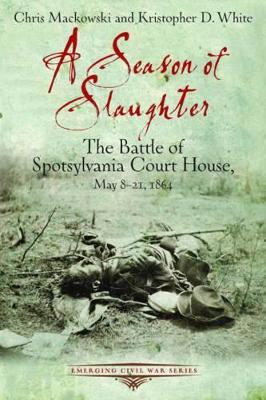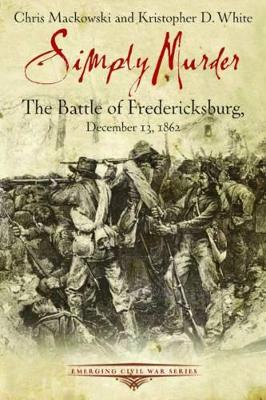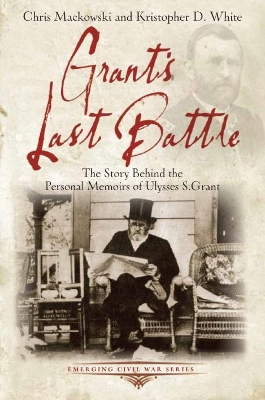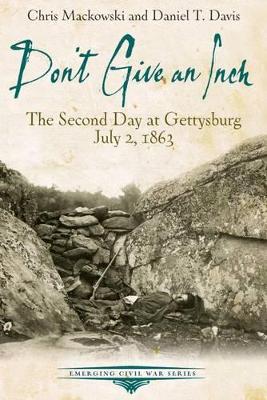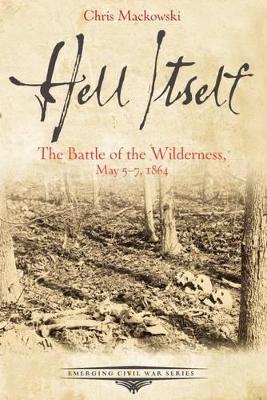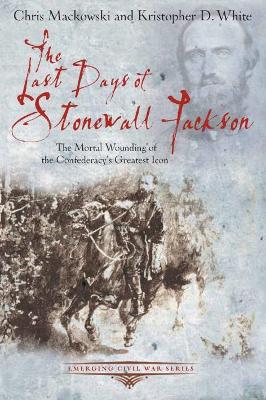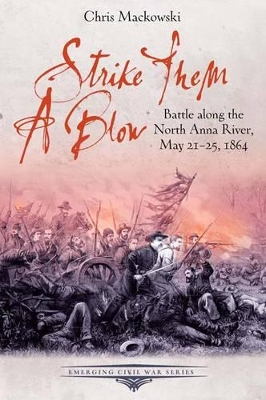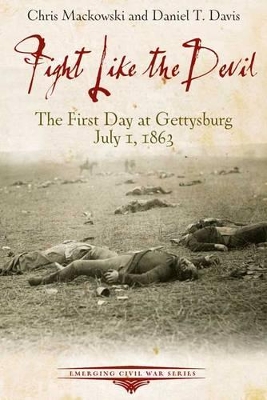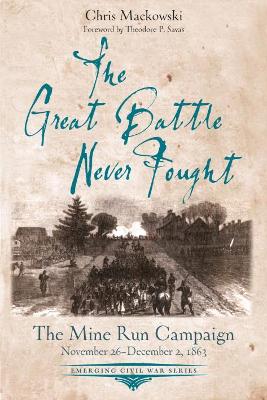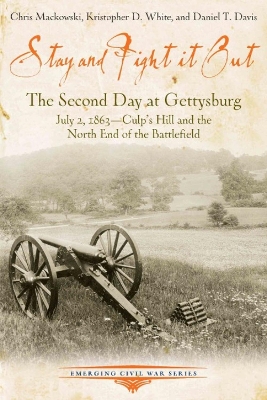Emerging Civil War
11 total works
His resolve entirely changed the face of warfare.
Promoted to command of all the Federal armies, the new lieutenant general chose to ride shotgun with the Army of the Potomac as it once again threw itself against the wily, audacious Robert E. Lee and his Army of Northern Virginia. But Grant did something no one else had done before: he threw his army at Lee, over and over again.
At Spotsylvania Court House, the second phase of the campaign, the two armies shifted from stalemate in the Wilderness to slugfest in the mud. Most commonly known for the horrific twenty-two-hour hand-to-hand combat in the pouring rain at the Bloody Angle, the battle of Spotsylvania Court House actually stretched from May 8-21, 1864, fourteen long days of battle and maneuver.
Grant, the irresistible force, hammering with his overwhelming numbers and unprecedented power, versus Lee, the immovable object, hunkered down behind the most formidable defensive works yet seen on the continent—Spotsylvania Court House represents a chess match of immeasurable stakes between two master opponents. This clash is detailed in A Season of Slaughter: The Battle of Spotsylvania Court House, May 8-21,1864.
As former battlefield guides at Spotsylvania Court House, authors Chris Mackowski and Kristopher D. White know the ground as intimately as anyone today. With the knowledge and insight that comes from that familiarity, coupled with their command of the fact, Mackowski and White weave together a gripping narrative of one of the war’s most consequential engagements.
A Season of Slaughter is part of the new Emerging Civil War Series offering compelling, easy-to-read overviews of some of the Civil War’s most important stories. The masterful storytelling is richly enhanced with hundreds of photos, illustrations, and maps.
“I had never before seen fighting like that, nothing approaching it in terrible uproar and destruction,”the officer said as he watched the slaughter. “It is only murder now.”
As a result of the carnage, the battle of Fredericksburg is usually remembered as the most lopsided Union defeat of the war.“Burnside’s folly,” it’s been called—named after the Union commander Maj. Gen. Ambrose Burnside who led the Army of Potomac to ruin along the banks of the Rappahannock River.
But the battle of Fredericksburg remains one of the most misunderstood and misremembered engagements of the war. Burnside started with a well-conceived plan and had every reason to expect victory. How did it go so terribly wrong?
Authors Chris Mackowski and Kristopher D. White have worked for years along Fredericksburg’s Sunken Road and Stone Wall, and they’ve taken thousands of visitors across the battlefield. In Simply Murder: The Battle of Fredericksburg, December 13, 1862, they not only recount Fredericksburg’s tragic story of slaughter, they also share information about the battlefield itself and the insights they’ve learned from years of walking the ground.
Simply Murder can be enjoyed in the comfort of one’s living room or used as a guide on the battlefield itself. It is part of the new Emerging Civil War Series which offers compelling, easy-to-read overviews of some of the Civil War’s most important stories. Each volume features masterful storytelling richly enhanced with hundreds of photos, illustrations, and maps.
The news of Grant’s illness came swift on the heels of his financial ruin. Business partners had swindled him and his family out of everything but the money he and his wife had in their pockets and the family cookie jar. Investors lost millions. The public ire that turned on Grant first suspected malfeasance, then incompetence, then unfortunate, naive neglect.
In this maelstrom of woe, Grant refused to surrender. Putting pen to paper, the hero of Appomattox embarked on his final campaign: an effort to write his memoirs before he died. The Personal Memoirs of Ulysses S. Grant, would cement his place as not only one of America’s greatest heroes but also as one of its most sublime literary voices.
Filled with personal intrigues of its own and supported by a cast of colourful characters that included Mark Twain, William Vanderbilt, and P. T. Barnum, Grant’s Last Battle recounts a deeply personal story as dramatic for Grant as any of his battlefield exploits.
Authors Mackowski and White have recounted Grant’s battlefield exploits as historians at Fredericksburg and Spotsylvania National Military Park, and Mackowski, as an academic, has studied Grant’s literary career. Their familiarity with the former president as a general and as a writer bring Grant’s Last Battle to life with new insight, told with the engaging prose that has become the hallmark of the Emerging Civil War Series.
The Last Days of Stonewall Jackson
by Chris Mackowski and Kristopher D. White
The Last Days of Stonewall Jackson recounts the events of that fateful night—considered one of the most pivotal moments of the war—and the tense vigil that ensued as Jackson struggled with a foe even he could not defeat. From Guinea Station, where Jackson crosses the river to rest under the shade of the trees, the story follows Jackson’s funeral and burial, the strange story of his amputated arm, and the creation and restoration of the building where he died (now known as the Stonewall Jackson Shrine). This newly revised and expanded second edition features more than 50 pages of fresh material, including almost 200 illustrations, maps, and eye-catching photos.
New appendices allow readers to walk in Jackson’s pre-war footsteps through his adopted hometown of Lexington, Virginia; consider the ways Jackson’s memory has been preserved through monuments, memorials, and myths; and explore the misconceptions behind the Civil War’s great What-If:“What if Stonewall had survived his wounds?”
With the engaging prose of master storytellers, Chris Mackowski and Kristopher White make The Last Days of Stonewall Jackson a must-read for Civil War novices and buffs alike.
Meanwhile, Grant’s Confederate counterpart, Robert E. Lee, looked for an opportunity to regain the offensive initiative.“We must strike them a blow,” he told his lieutenants.
The toll on both armies was staggering.
But Grant’s war of attrition began to take its toll in a more insidious way. Both army commanders—operating on the dark edge of exhaustion, fighting off illness, pressure-cooked by stress—began to feel the effects of that continuous, merciless grind in very personal ways. Punch-drunk tired, they began to second-guess themselves, began missing opportunities, began making mistakes.
As a result, along the banks of the North Anna River, commanders on both sides brought their armies to the brink of destruction without even knowing it.
Picking up the story started in the Emerging Civil War Series book A Season of Slaughter: The Battle of Spotsylvania Courthouse, historian Chris Mackowski follows the road south to the North Anna River. Strike Them a Blow: Battle Along the North Anna River offers a concise, engaging account of the mistakes and missed opportunities of the third—and least understood—phase of the Overland Campaign.
As Confederate forces groped their way through the mountain passes, a chance encounter with Federal cavalry on the outskirts of a small Pennsylvania crossroads town triggered a series of events that quickly escalated beyond Lee’s—or anyone’s—control. Waves of soldiers materialized on both sides in a constantly shifting jigsaw of combat.“You will have to fight like the devil . . .” one Union cavalryman predicted.
The costliest battle in the history of the North American continent had begun.
July 1, 1863 remains the most overlooked phase of the battle of Gettysburg, yet it set the stage for all the fateful events that followed.
Bringing decades of familiarity to the discussion, historians Chris Mackowski and Daniel T. Davis, in their always-engaging style, recount the action of that first day of battle and explore the profound implications in Fight Like the Devil.
Through the passage of time, Custer’s last fight has come to overshadow the rest of his military career, which had its brilliant beginning in the American Civil War.
Plucked from obscurity by Maj. Gen. George McClellan, Custer served as a staff officer through the early stages of the war. His star began to rise in late June, 1863, when he catapulted several grades to brigadier general and was given brigade command. Shortly thereafter, at Gettysburg and Buckland Mills, he led his men—the Wolverines—in some of the heaviest cavalry fighting of the Eastern Theater.
At Yellow Tavern, Custer’s assault broke the enemy line, and one of his troopers mortally wounded the legendary Confederate cavalryman, J.E.B. Stuart. At Trevilian Station, his brigade was nearly destroyed. At Third Winchester, he participated in an epic cavalry charge. Elevated to lead the Third Cavalry Division, Custer played a major role at Tom’s Brook and, later, at Appomattox, which ultimately led to the surrender of the Army of Northern Virginia.
Historian Daniel T. Davis, a long-time student of George Custer, has spent countless hours walking and studying the battlefields where Custer fought in Virginia, Maryland, and Pennsylvania. In The Most Desperate Acts of Gallantry, he chronicles the Civil War experiences of one of the most recognized individuals to emerge from that tragic chapter in American history.
After his stunning victory at Gettysburg in July of 1863, the Union commander spent the following months trying to bring the Army of Northern Virginia to battle once more and finish the job. The Confederate army, robbed of much of its offensive strength, nevertheless parried Meade’s moves time after time. Although the armies remained in constant contact during those long months of cavalry clashes, quick maneuvers, and sudden skirmishes, Lee continued to frustrate Meade’s efforts.
Meanwhile, in Washington, D.C., Meade’s political enemies launched an all-out assault against his reputation and generalship. Even the very credibility of his victory at Gettysburg came under assault. Pressure mounted for the army commander to score a decisive victory and prove himself once more.
Smaller victories, like those at Bristoe Station and Rappahannock Station, did little to quell the growing clamor—particularly because out west, in Chattanooga, another Union general, Ulysses S. Grant, was once again reversing Federal misfortunes. Meade needed a comparable victory in the east.
And so, on Thanksgiving Day, 1863, the Army of the Potomac rumbled into motion once more, intent on trying again to bring about the great battle that would end the war.
The Great Battle Never Fought: The Mine Run Campaign, November 26-December 2 1863 recounts the final chapter of the forgotten fall of 1863—when George Gordon Meade made one final attempt to save the Union and, in doing so, save himself.
Stay and Fight it out
by Chris Mackowski, Kristopher White, and Daniel Davis
July 2 saw a massive Confederate attack against the southernmost part of the line. As the Southern juggernaut rolled inexorably northward, Federal troops shifted away from Culp’s Hill and Cemetery Hill to meet the threat. Just then, the Army of Northern Virginia’s vaunted Second Corps launched itself at the weakened Federal right. The very men who, just the day before, broke the Union army resolved to break it once again.
The ensuing struggle—every bit as desperate and with stakes every bit as high as the more-famous fight at Little Round Top on the far end of the line—left the entire Union position in the balance. “Stay and fight it out,” one Union general counseled.
The Confederates were all too willing to oblige.
Authors Chris Mackowski, Kristopher D. White, and Daniel T. Davis started their Gettysburg account in Don’t Give an Inch: The Second Day at Gettysburg, July 2, 1863—from Little Round Top to Cemetery Ridge. Picking up on the heels of its companion volume, Stay and Fight It Out: The Second Day at Gettysburg, July 2, 1863—Culp’s Hill and the Northern End of the Battlefield they recount the often-overlooked fight that secured the Union position and set the stage for the battle’s fateful final day.
